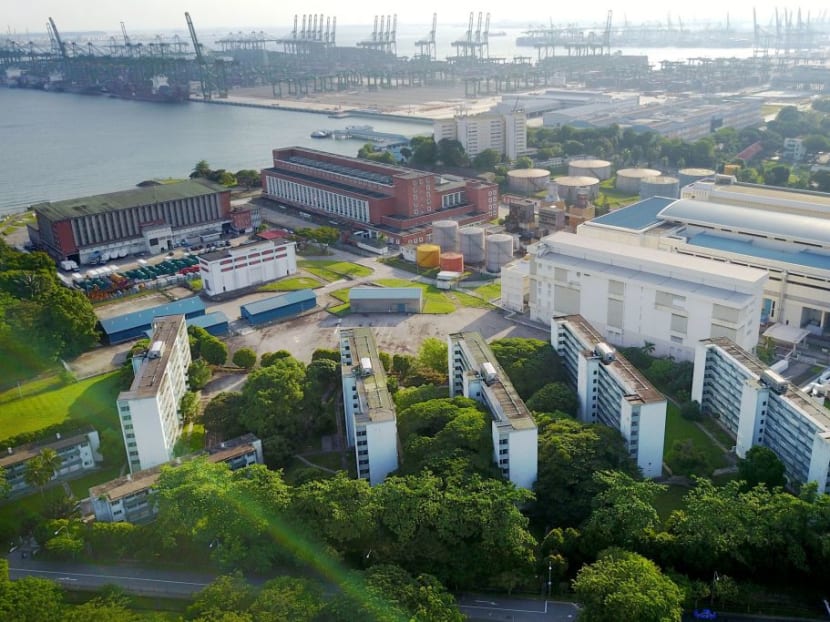New substation in Pasir Panjang to be built below ground, to free space in land-scarce Singapore
SINGAPORE — Utility provider SP Group will be building Singapore’s first 230kV underground substation at the former Pasir Panjang Power District, as part of the country’s push to locate supporting infrastructure underground.

Overview of the Pasir Panjang Power Station (red brick buildings) and the workers’ quarters (foreground). The Pasir Panjang Power Station was decommissioned in 1987.
SINGAPORE — Utility provider SP Group will be building Singapore’s first 230kV underground substation at the former Pasir Panjang Power District, as part of the country’s push to locate supporting infrastructure underground.
Announcing this on Wednesday (May 30), National Development Minister Lawrence Wong said that the underground substation will be integrated with a new commercial building on top of it.
“We are in the process of drawing up plans to rejuvenate the area, and this additional space will mean that there are more opportunities for development,” he said at the launch of the Underground: Singapore’s Next Frontier exhibition in URA Centre.
The old Pasir Panjang Power Station was decommissioned in 1987. In terms of maximising the use of subterranean space, setting up the underground facility will free up three hectares of land above ground, which is about the size of three football fields.
Mr Wong noted that there are “many more substations, storage facilities and transport infrastructure all over Singapore” and the priority is to locate these below ground.
“If we combine all of that and progressively locate many of these facilities underground, there is tremendous potential for us to start thinking about the possibilities for future development.”
He added that Singapore started using more of its underground space decades ago “with underground utility cables, and water and sewage pipes”, as well as building South-east Asia’s first underground cavern for oil storage and the world’s most advanced underground ammunition facility.
However, there is “still much more” to explore in this “new frontier”. “We are still far from maximising the potential of underground space in Singapore,” he said.
By next year, the Urban Redevelopment Authority (URA) will release the 3D Underground Master Plan for selected pilot areas. It will show what is already in the ground, what could be built in the future, and the regulations and requirements for industry.
“With an accurate 3D map, we can look at safeguarding underground space for future use... We can also plan more holistically for aboveground and underground possibilities, to ensure they are compatible, integrated and seamless,” Mr Wong said.
He reiterated that the Government does not have any plan to locate residential spaces below ground. Instead, with supporting infrastructure underground, it helps to “free up surface land for more homes, more amenities, and more green spaces – things that matter to Singaporeans, and that can improve the quality of life for everyone”, he added.
In studying how England, Finland and Japan go about planning the use of underground spaces in their cities, Mr Wong said that apart from harnessing 3D technology, there is also the need to get accurate information and data. This means access to geological data, utility plans and building records.
To help industry players in this area, the Singapore Land Authority (SLA) will launch a centralised, one-stop portal for all underground utility plans by the end of this year. The Integrated Land Information Service website will allow engineers or construction firms, for example, to buy underground plans.
From July this year, the SLA and the Building and Construction Authority will be putting up geological information collected from government projects on the website. Such data will be freely available as a reference for site investigation and construction works.
To facilitate the expansion of Singapore’s underground network, the Government is on the lookout for partners with specialised expertise from all fields, Mr Wong said. “We are even prepared to look at providing funding support for (research and development) and feasibility studies, to support innovative ideas that make full use of technologies to push the boundaries of underground space.”











